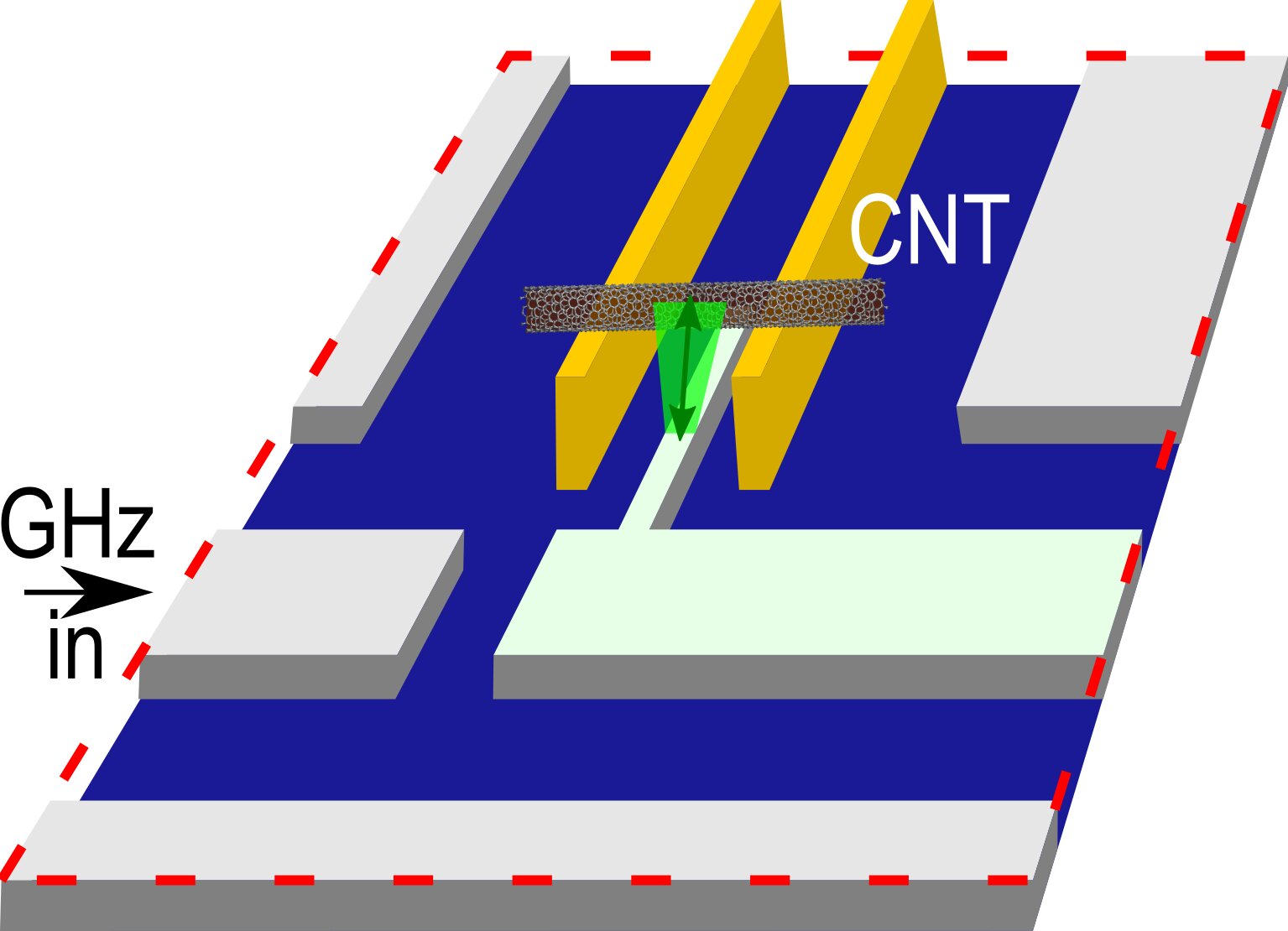
Physicists at Universität Regensburg have coupled the vibrations of a macromolecule, a carbon nanotube, to a microwave cavity, creating a novel and highly miniaturized optomechanical system. The team achieved this by using the quantization of the electrical charge, i.e., that it is carried by single electrons, as a strong amplifier mechanism.
Normally, coupling the motion of a macromolecule such as a carbon nanotube to microwaves is hard. Because electromagnetic wavelengths used in quantum computing or cavity quantum electrodynamics devices, working at GHz frequencies, are in the millimeter range. A typical nanotube device, useful both for trapping electrons in known quantum states and as a vibrational resonator, is less than a micrometer long, with vibration amplitudes below a nanometer. As a result of this mismatch of sizes, the motion of the nanotube just does not modify the electromagnetic field of a microwave cavity much. The coupling predicted by standard optomechanical theory is minimal.
A nanotube is an excellent string resonator, storing energy for a long time; its vibration could be used to translate quantum information between fundamentally different degrees of freedom. And both single trapped electrons and superconducting microwave circuits are hot candidates for quantum computation architectures.
They present an important step towards combining completely different quantum technologies, as, e.g., electron spin qubits and superconducting qubits, in one device.
Their findings were published in Nature Communications.
